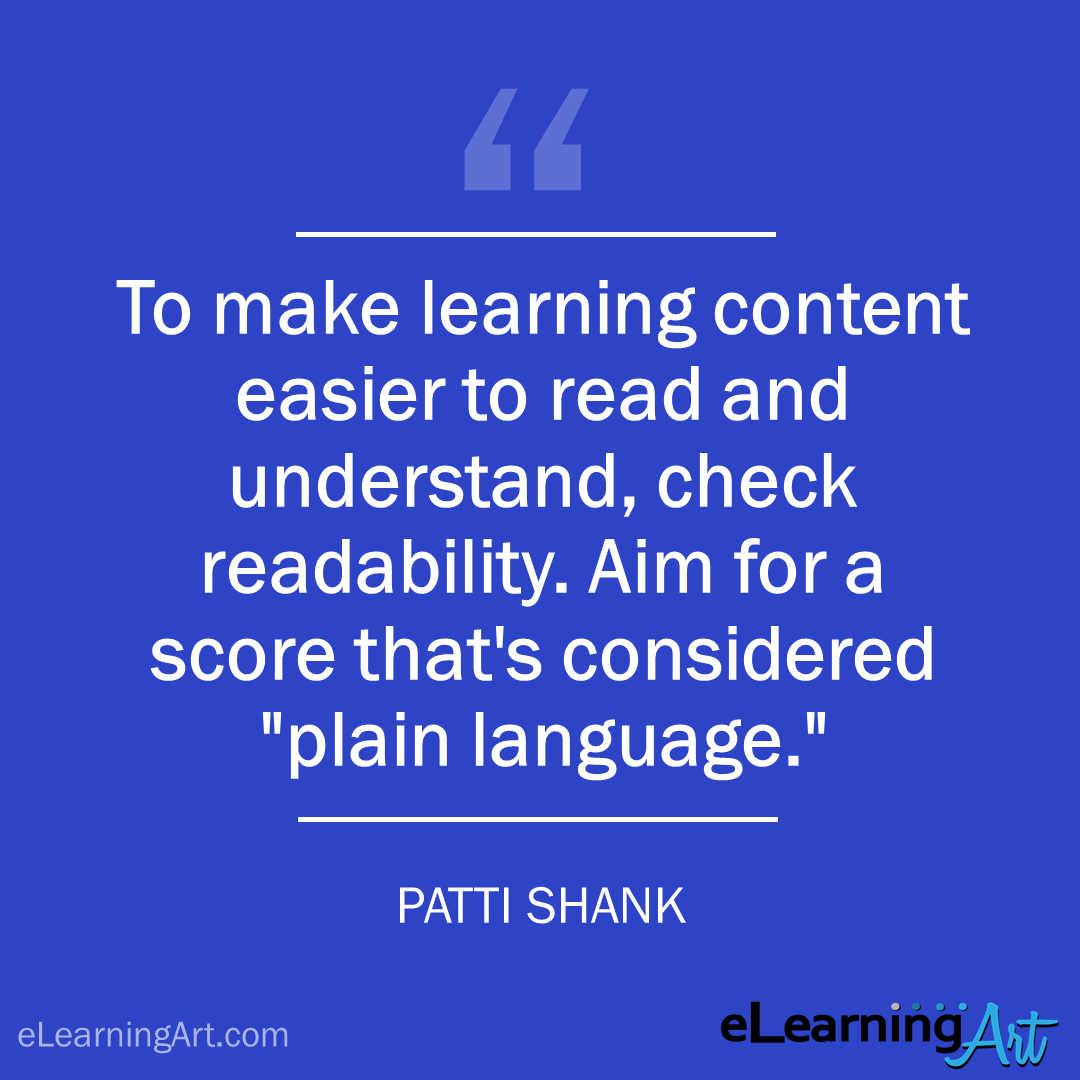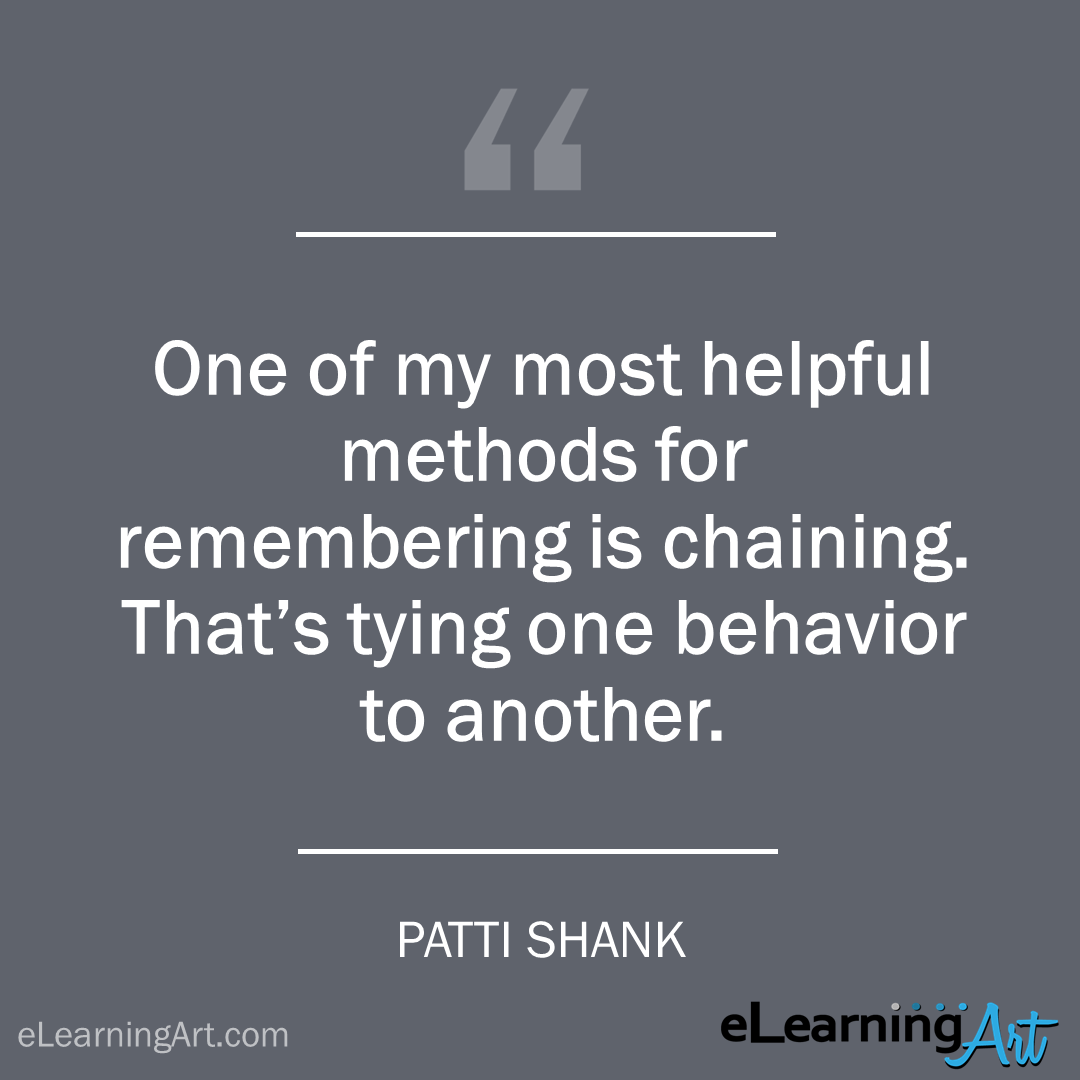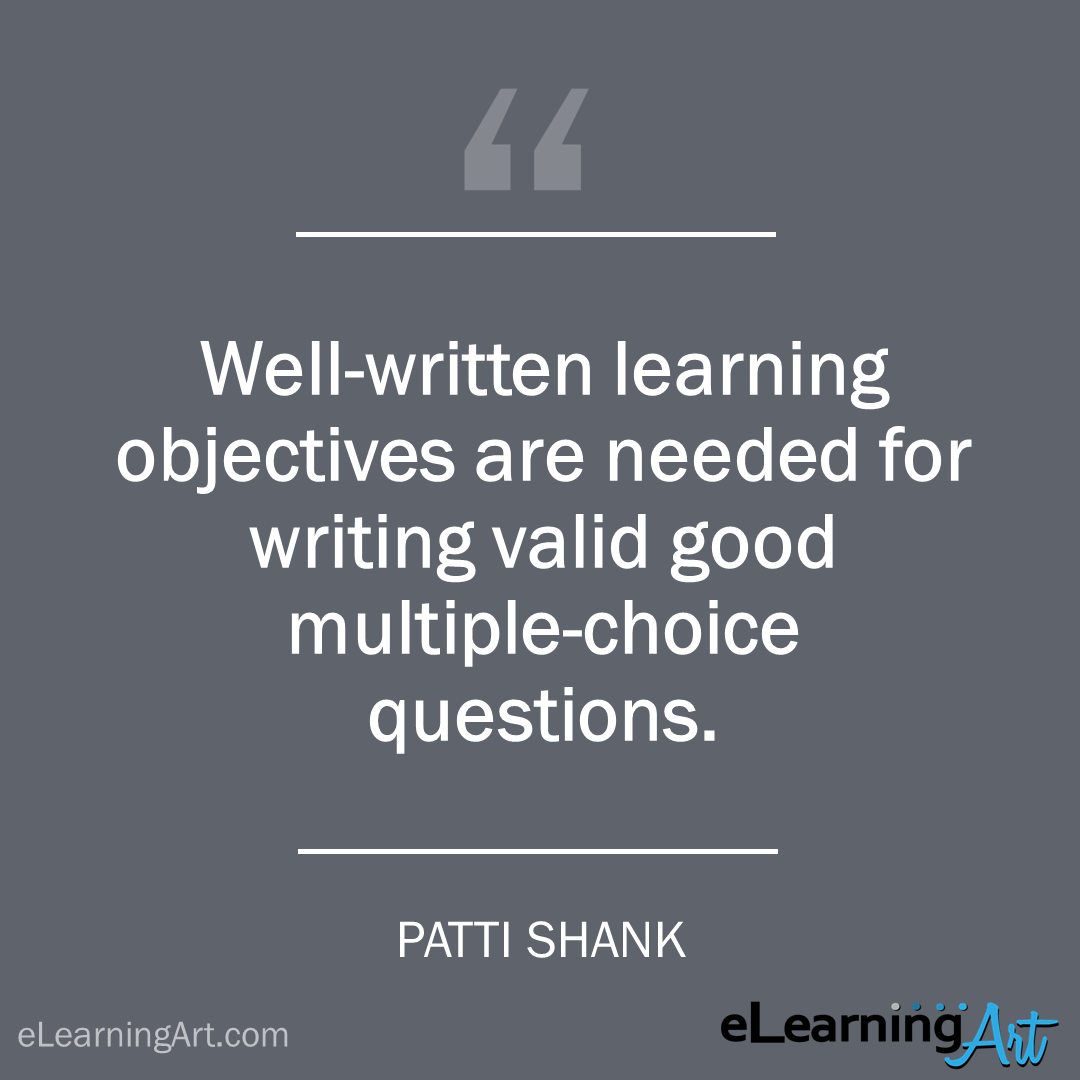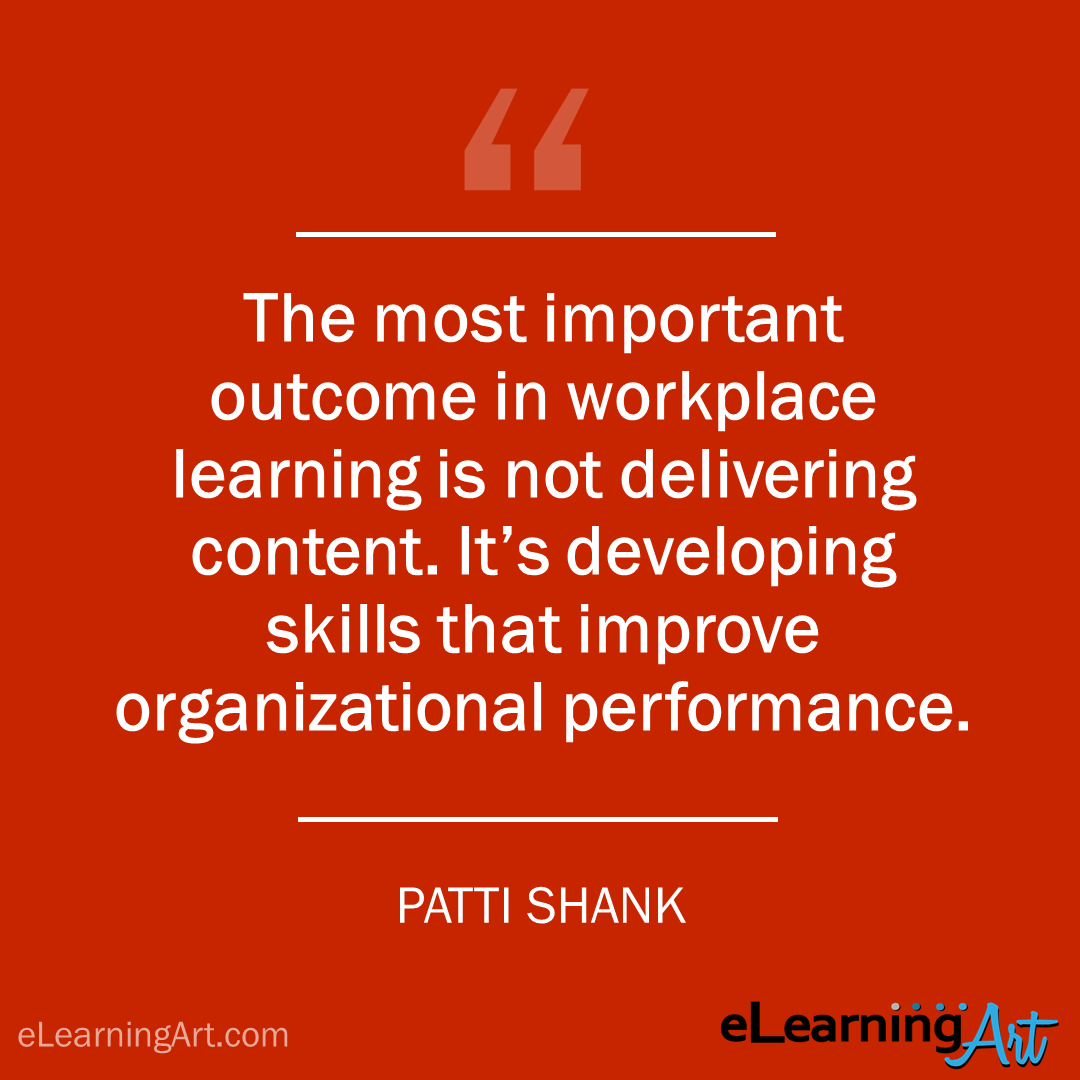 When it comes to building workplace learning, the goal is always to drive behavioral change. And to achieve that, it’s essential to adhere to evidence-based practices.
When it comes to building workplace learning, the goal is always to drive behavioral change. And to achieve that, it’s essential to adhere to evidence-based practices.
But let’s face it, not everyone has the time to dive into academic research on cognitive science, instructional theory, and education to uncover these practices.
Luckily, we have Patti Shank!
Patti has dedicated herself to delving into the science behind deeper learning. Her books and live-online courses empower instructional designers to “do what works” more effectively.
Since evidence-based practices are crucial, I reached out to Patti to share her top insights, and I’m thrilled to pass them on to you here.
Keep reading to discover these valuable eLearning writing tips!
1. Incorporating Evidence-Based Practices
 Patti: A crucial evidence-based practice for learning practitioners is designing to minimize unnecessary cognitive load.
Patti: A crucial evidence-based practice for learning practitioners is designing to minimize unnecessary cognitive load.
Cognitive load refers to the mental effort needed for learning. It’s important to avoid overloading learners with unnecessary information that can hinder their ability to grasp concepts. Some common sources of unnecessary cognitive load in instruction include:
- Useless decorative images
- Content provided “just in case”
- Information that requires splitting attention between multiple sources
- Complex media that requires excessive mental effort to understand
2. Writing Voice in eLearning Courses
 Patti: Research advises writing in a conversational tone, addressing learners as individuals rather than a collective entity. This approach enhances attention and retention.
Patti: Research advises writing in a conversational tone, addressing learners as individuals rather than a collective entity. This approach enhances attention and retention.
3. Writing Training Programs Effectively

Patti: One prevalent mistake is creating content that isn’t tailored for instructional purposes. It’s crucial to write with clarity and comprehension in mind, avoiding unnecessary cognitive load. To aid in skill enhancement, I’ve authored a comprehensive book on this topic and am developing online courses for further learning.
4. Enhancing Readability in Learning Content

Patti: To improve content readability, aim for a readability score categorized as “plain language.” This score evaluates the ease of understanding based on factors like sentence length and word familiarity. Ensuring readability enhances comprehension and retention.
Note: Easily check the readability score of your Word document by following the steps provided by Microsoft.
5. Creating Memorable Training Experiences

Patti: Relevance plays a vital role in ensuring information retention and application. Content must align with learners’ needs to capture their attention and facilitate deep processing for better memory retention. Understanding the audience’s job roles, challenges, and requirements is key to delivering effective training.
6. Memory Enhancement Techniques

Patti: Chaining behaviors, or habit stacking, is an effective method for establishing and maintaining daily habits. Additionally, using tools like detailed planners and notifications can aid in task recall and organization.
7. Evaluating Learning Progress with Multiple Choice Questions

Patti: Writing effective multiple-choice questions is a critical skill for assessing comprehension and facilitating deeper learning. Well-crafted questions not only gauge understanding but also aid memory retention and skill application.
8. Ensuring Validity in Multiple Choice Questions

The main issue with MCQ assessments is their validity. Many poorly constructed questions fail to measure learning objectives accurately, leading to unreliable assessment data and potential legal complications. Crafting valid MCQs is essential for effective learning evaluations.
9. Importance of Learning Objectives

Patti: Well-crafted learning objectives are fundamental for developing valid multiple-choice questions and enhancing learning outcomes. Clear objectives guide participants, instructional content, assessments, and continuous improvement processes, fostering a more effective learning environment.
10. Bridging Assessment and On-the-Job Performance

Patti: By aligning job-focused learning objectives with business goals, designing customized programs, and evaluating objective achievement, organizations can track learning progress effectively and drive desired results.
11. Shifting Focus from Content to Skill Development

Patti: Recognizing that the primary goal of workplace learning is skill enhancement, not content delivery, is essential. Focusing on developing skills that enhance organizational performance should be the top priority for learning builders.
12. Trends in Workplace Learning

Patti: The rising interest in evidence-based practices in workplace learning is a significant trend. People are moving away from educational myths and embracing proven methodologies. Additionally, the community-driven knowledge sharing on platforms like Twitter is fostering collaboration and learning opportunities.
A big thank you to Patti for sharing these invaluable insights on eLearning writing!
If you found Patti’s tips helpful, be sure to explore her courses and books for further learning.



